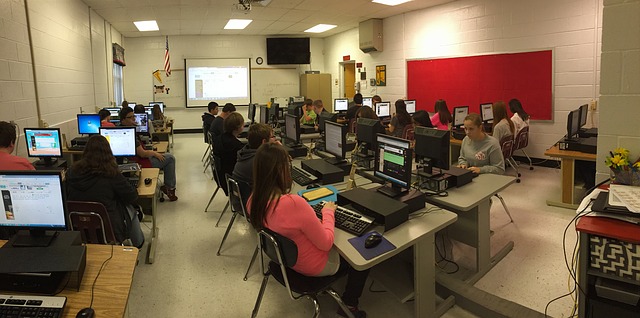*This post was written in 2018, after the school shooting in Santa Fe, Texas. Ask how large class sizes are today, and what schools are logically doing to improve safety.
Once again, families and a community are mourning—this time in Santa Fe, Texas. Policymakers must address gun control, mental health services, and school safety.
There’s another solution for schools. One that few education reformers entertain. Smaller class sizes and providing students with real personalized learning. Not sitting kids in front of screens for all of their schooling—
but ensuring that they are better connected to teachers and their classmates. Providing small enough classes so teachers and students can help each other adjust to life when they experience problems.
High school teachers in this country face class rosters of 30-40 students per class. This means that within the course of a day teachers face approximately 200 students! With so many students it’s difficult to get to know everyone.
Teachers who strike for better wages and working conditions always ask for a reduction in class size.
Education reformers have rejected class size reduction. Jeb Bush spoke against it when Florida voted for lowering class size when he was governor, although he is a huge proponent of online “personalized” learning.
Bill Gates has also been against lowering class size.
Teachers cannot control what happens in a student’s home, but they can work with students to make school a warm environment, where students learn that they have someone they can always turn to who will help them. This is best done with smaller class sizes of 20 or less.
Even if all classes are not reduced, students should have access to at least one period a day where teachers and students can get to know one another.
If students have even one class where they are well-known, where students boost each other, and teachers work to bring students together, it might help.
Unfortunately, even if schools begin the day with homerooms, those classes are large too.
Most class size studies look at student achievement, especially at the elementary level. A study by Glass and Smith (1979) found that smaller class sizes can have a positive effect on achievement in later grades.
But what about the connection between smaller class size and positive student behavior? Wouldn’t smaller class sizes make it easier for a teacher to pinpoint when a student is having a meltdown, behavior changes, or a crisis at home?
Smaller class sizes could help students get to know one another and be friends.
Finn, Pannozzo, and Achilles (2003) hypothesized that when class sizes are reduced, major changes occur in students’ engagement in the class.
Finn went on to say in a NPR report how smaller class sizes under 20 can change behavior in early grades. Why would this not be truer for high school students? In small classes, students’ behavior changes even more than does teacher behavior.
In The Seattle Times, while debating class size he said: Smaller, quieter classes (fewer than 20 students) may have their biggest effect on kids who are inattentive and try to avoid looking the teacher in the eye. That’s because they can’t hide either.
Children usually act out less when class numbers are smaller. In smaller classes they get more attention, so they don’t need to act out.
While teaching middle and high school, I had students who experienced divorce, parental illnesses, mental health difficulties, losses due to death, parental remarriage, new siblings, bullying, academic problems, accidents, their own illnesses, abandonment, and many other problems.
With smaller classes, teachers have time to get to get to know parents.
If I had not had smaller resource class sizes, I may not have known much about the problems my students faced. I would not have had the time to talk at length with parents. I worked with counselors at my schools, who were also able to support my students. Schools need more counselors too.
Teachers are better able to help all students if their class sizes are small enough for them to get to know their students. It’s amazing that teachers do all that they do with such huge numbers.
Smaller classes or alternative placements, and better school communication between teachers and parents, is what’s needed in our schools. The huge class rosters in our high schools today present an ever present danger that students with emotional difficulties will not be noticed.
References
Gene V. Glass and Mary Lee Smith. Meta-Analysis of Research on Class Size and Achievement. Educational Evaluation and Policy Analysis. 1 (1) 1979.
Class Size Matters: A clearinghouse of information supporting the lowering of class size.


It might not be a panecea, but you are absolutely correct. One of the major ingredients of any solution to the problem of improvement of education is personal contact. Unless, of course, you subscribe to the philosophy that we should only teach a minority of students, the ones who are highly motivated, come from stable homes, and study like wild every night. Then all you need is to eliminate most of the students. Then we can expect the rest of them to lead us to a wonderful world.